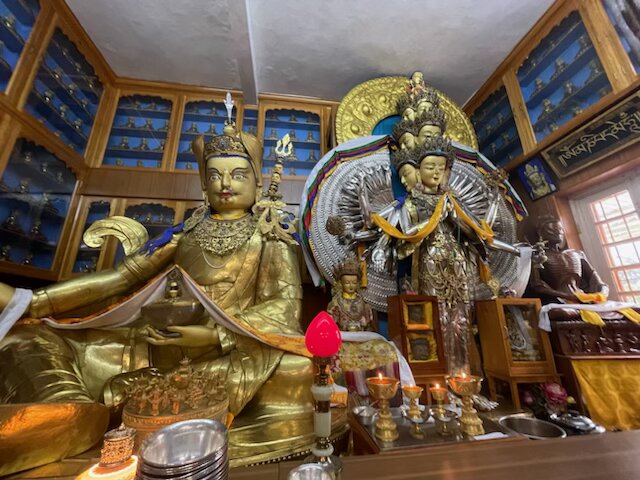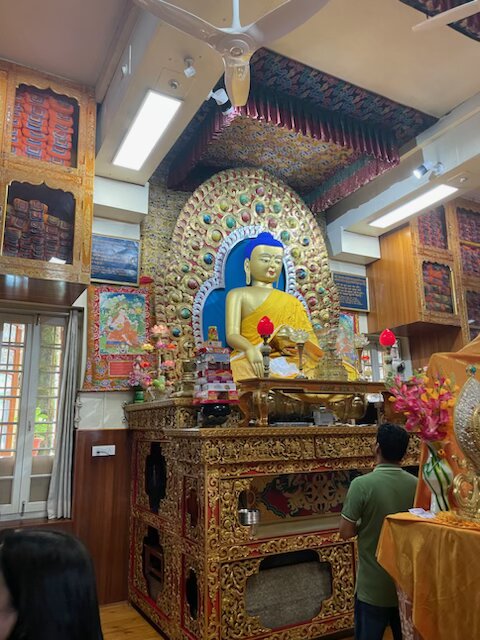Week 7: Hope and a Hoedown
This week, we pushed forward with our new project on Tibetan statelessness. Our days have been filled with cases of individual Tibetans who have sued the Indian government (both successfully and unsuccessfully) for their various claims to citizenship and legal status. We have also gotten to dive into the history of the Tibet-China conflict, reading everything from statistical accounts of ‘how many Tibetans lived where, when,’ to His Holiness the Dalai Lama’s speeches from the 80s and 90s.  We read India’s 2014 “Tibetan Rehabilitation Policy,” which attempted to equalise access to Indian government benefits for Tibetans; His Holiness’s 5-point peace plan; all sorts of information about the Middle Way (His Holiness’s proposition for an autonomous but not fully independent Tibet), and lots of questions and hypotheses about what will happen when the Dalai Lama inevitably dies, as China has codified into law that they will have the power to choose the next Dalai Lama, and many believe that soon, Tibetans may have to reckon with the reality of two Dalai Lamas (a real one and one appointed by the Chinese government). Kate and I have been asked not to publicly divulge some parts of our project, so I will not share our end goal; suffice it to say, however, that the more I read about Tibetan statelessness, the Tibet-China conflict, and India’s relationship with exiled Tibetans, the more I feel there is to learn.
We read India’s 2014 “Tibetan Rehabilitation Policy,” which attempted to equalise access to Indian government benefits for Tibetans; His Holiness’s 5-point peace plan; all sorts of information about the Middle Way (His Holiness’s proposition for an autonomous but not fully independent Tibet), and lots of questions and hypotheses about what will happen when the Dalai Lama inevitably dies, as China has codified into law that they will have the power to choose the next Dalai Lama, and many believe that soon, Tibetans may have to reckon with the reality of two Dalai Lamas (a real one and one appointed by the Chinese government). Kate and I have been asked not to publicly divulge some parts of our project, so I will not share our end goal; suffice it to say, however, that the more I read about Tibetan statelessness, the Tibet-China conflict, and India’s relationship with exiled Tibetans, the more I feel there is to learn.
We also spent a day Bluebooking citations for the POCSO report (I have never appreciated my 1L fellow more—thanks Matt).
The standout moments of the week came outside of work. On Friday, we attended another event at Hope café: a documentary screening about Tibetan self-immolations, which started in 1998. It was quite a thing to watch. Self-immolation became a more common form of protest among Tibetans in 2009, and was started by monks in Ngawa County, Sichuan, but has spread to other parts of Tibet in the last decade. According to the documentary, the most common words spoken by self-immolators while they are burning are “Return the Dalai Lama to Tibet,” and “We want freedom.” As of May 2022, 160 Tibetans have set themselves on fire in protest of China’s occupation of Tibet. After the documentary, someone asked the owner of the café (who organized the event) how self-immolations played into Tibetan ideals of non-violence (advised and promoted by His Holiness the Dalai Lama). He answered that to set oneself on fire is the ultimate form of non-violence. He told us that the last words of self-immolators are verbal evidence of non-violent ideas, and that like Buddha, who in a past life gave his own blood to feed a brood of tiger cubs, costing him his life, those who self-immolate for Tibet are sacrificing their lives so that Tibet can survive.
You can find the documentary here if you are interested. It is only an hour long and free to watch on Youtube. I highly recommend it, as it covers the recent history of Tibet and China and contains fascinating interviews with Tibetan, Chinese, and western scholars. A warning, though: smuggled tapes of self-immolations and one interview with a boy after his self-immolation (he died soon after) are difficult to watch.

On Saturday, we went to His Holiness the Dalai Lama’s temple to celebrate his 89th birthday.It was a vibrant event, with brightly colored decorations and group after group of schoolchildren performing traditional Tibetan songs and dances. The temple was packed, and the mood was joyful—even without the Dalai Lama there in person (he is still recovering from knee surgery in the U.S.), what felt like hundreds came to what I can easily say was the biggest birthday party I’ve ever seen. It was an exciting way to end the week, and a spirited reminder of the continued life, joy, and faith of the Tibetan community in India.

